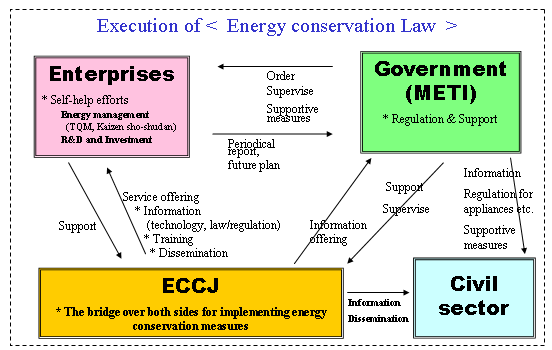Examples of Energy Conservation Technologies
for Each Step
![]() High investment
High investment
| Step 1 Enhancement of management, Improvement of operation |
Step 2 Additional installation or improvement of equipment |
Step 3 Change in process, Use of high-efficiency equipment |
|||||||||||||||||||
| Rationalization of fuel combustion |
|
|
|
||||||||||||||||||
| Rationalization of heating/cooling and heat transfer |
|
|
Omission of processes, Utilization of sensible heat in the preceding process (hot strip charge), Re-compression of steam, Improvement of catalyst (PP, exhaust gas treatment), Use of film, Changing the constituents (low-temperature paints, materials that do not require heat treatment), Heating by infrared rays, Changing materials (use of recycled paper and water sediment), and jet heating |
||||||||||||||||||
| Prevention of heat loss through radiation/heat transfer |
|
|
Reducing time by use of larger current for electric furnaces |
||||||||||||||||||
| Recovery and reuse of waste energy |
Prevention of waste energy leaks |
|
|
||||||||||||||||||
| Rationalization of conversion of heat into motive power, etc. |
|
|
|
||||||||||||||||||
